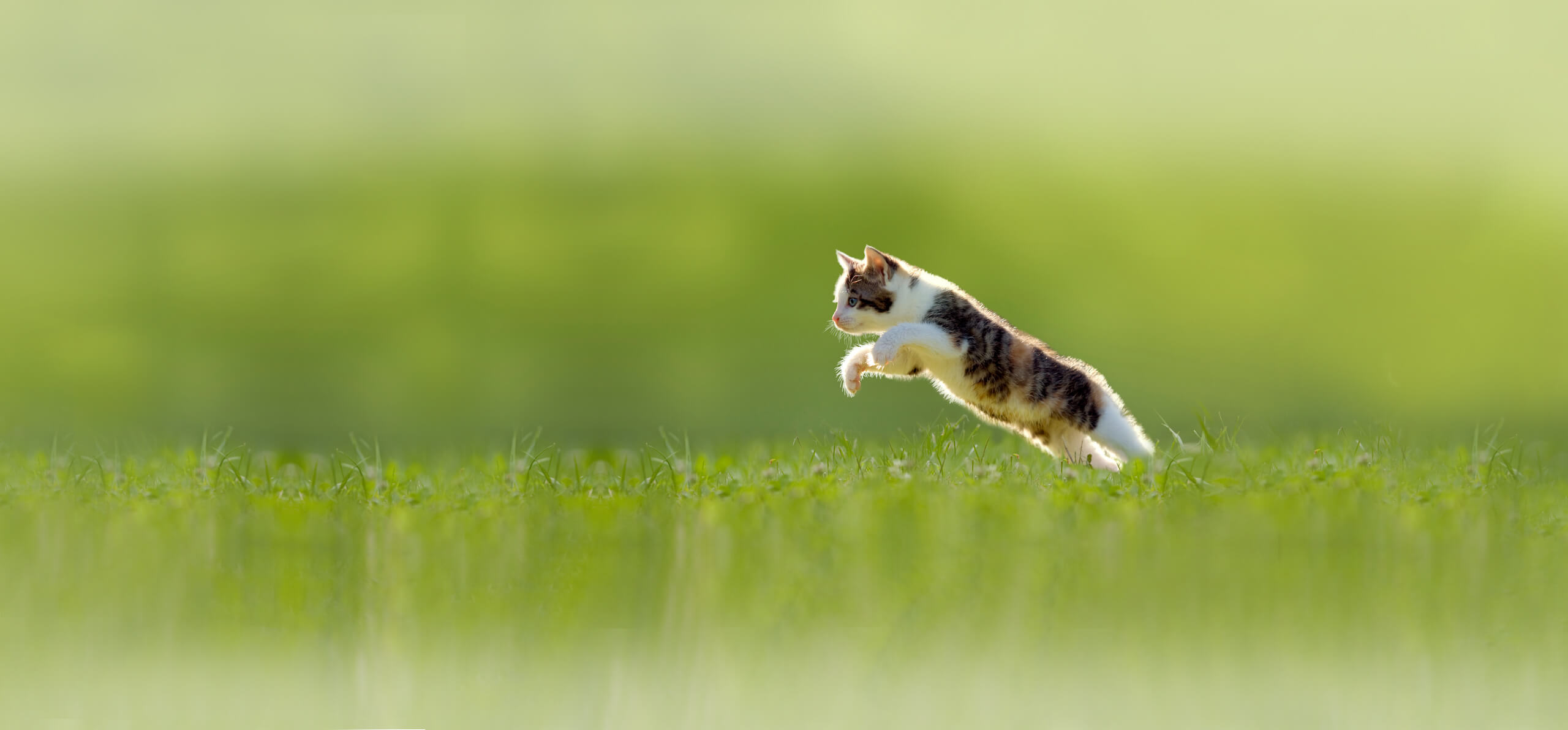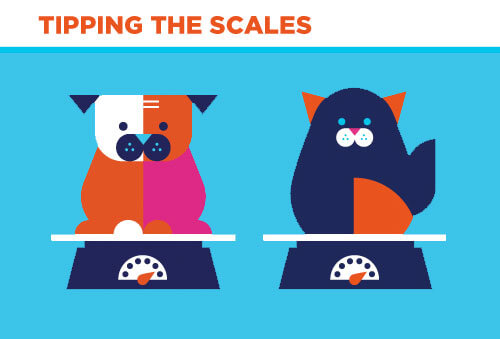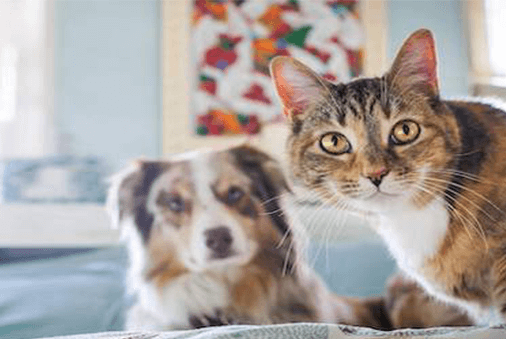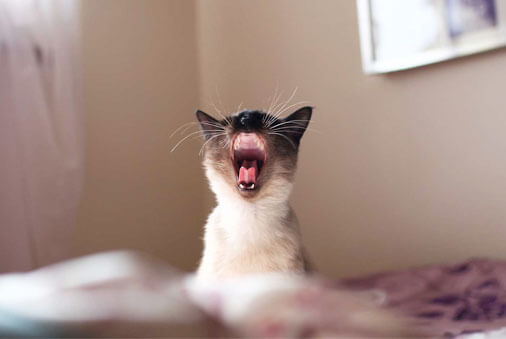Jungle Divas: Meeting Your Domesticated Cat’s Nutritional Needs
In their ancestral habitats, cats hunted prey that was high in protein with small amounts of fat and carbohydrates. This makes them “obligate carnivores”: strict meat eaters who rely on nutrients from animal tissue to meet their nutritional needs.
Cats also require vitamins, minerals and amino and fatty acids to build their bodies, supply energy and control their metabolism.
Unique Metabolism
We all know dogs and cats differ and diet is one of the ways. What’s good for a canine can be hazardous to felines due to their unique metabolism, which makes their bodies sensitive to just the right amount of nutrients.
Ask your veterinarian to recommend a high-quality food that’s specifically formulated to supply your cat with optimal vitamins, minerals and a healthy caloric/nutritional balance for her specific health and life stage needs. Supplements aren’t necessary unless your veterinarian recommends them.
They will also advise a feeding schedule; commonly cats eat two meals daily with portions adjusted for your feline’s health and activity level.
All-Day “Dry” Dining
Cat food comes in three formulas. The dry variety should contain 6 to 10% moisture, an animal protein source, vitamins, minerals, and flavor-enhancing ingredients so your cat won’t wrinkle her whiskers in distaste.
Dry food’s convenient because it can be left in your cat’s bowl to be eaten whenever she wants, unlike dog food that often gets devoured in one sitting. Always store unused portions in cool, dry places. Stocking up? Keep the food in its original bag and store in airtight containers so it doesn’t lose its nutritional value and taste. Always check expiration dates, too.
More Moisture
Semi-moist cat food is primarily 35% water and an animal protein. Like dry food, it can be eaten freely throughout the day, but doesn’t stay fresh as long as dry foods, so it needs refrigeration after opening and should be used within 72 hours.
Grab a Can Opener
Finicky felines may like wet food the best. With an average of 75% water, it can help your cat meet her daily water needs and is often the most flavorful food featuring a variety of cat-appealing recipes.
It’s also easy to stock up on; the cans stack well and have a long shelf life before they’re opened. Refrigerate wet food once opened so unused portions don’t spoil.
Felines usually crave variety so try different flavors and recipe combinations. Mixing dry and wet foods together can also keep picky cats purring for more.
Life Stage Labels
Always read ingredients carefully to be sure your cat’s getting her nutritional needs met. Kittens, adult cats, pregnant or nursing felines, and mature cats all have their own nutritional needs to maintain a complete and balanced diet, which should be stated on the nutrition label.
Again, ask your veterinarian to recommend a high-quality cat food that meets nutritional needs specific to your cat’s life stage and physical condition.
Ingredients listed first make up the majority of the food so look for meat and other animal proteins listed in the first few ingredients for your cat to get the important amino and fatty acids she needs. Nutrients like B vitamins thiamine and niacin are often included as well.
Taurine Is a Must
Taurine, an amino acid exclusive to animal-based proteins, is necessary for healthy vision, digestion, heart function, normal pregnancy and fetal development, and for a healthy immune system.
Most mammals manufacture taurine from other amino acids in their bodies. Not cats. Therefore taurine’s an essential nutrient because felines have trouble making and storing it in their bodies. It’s important your cat gets enough high-quality, animal-based proteins regularly from her diet to ensure she gets the taurine she needs.
Taurine can also be added to cat foods for specific developmental or health purposes. If your cat has underlying health problems, or is on a weight loss diet, your veterinarian may recommend food that’s supplemented with this crucial amino acid.
Water Regularly
Many humans neglect hydration, no wonder we sometimes forget to water our cats. Your feline’s ability to regulate body temperature and process food depends on a regular supply of fresh water.
Always replenish your cat’s water throughout the day.
Not Too Many Treats
Just as a steady diet of goodies is not good for humans, too many treats are not optimal for your cat. Even healthy treats. Your veterinarian will most likely advise limiting treats to 5% or less of your cat’s daily diet.
Stick with natural treats made specifically for cats and avoid:
• Raw meat; although an excellent source of animal protein, it can transmit infectious diseases like toxoplasmosis.
• Tuna and other canned fish meant for humans may smell tempting to your cat but can cause serious neurological disorders if she eats it.
• Got milk? Avoid giving it to your cat. Many felines are lactose-intolerant and get upset stomachs from dairy products. Though cats lapping up milk was a common visual from the past, your adult feline doesn’t need milk if she’s fed a nutritious diet.
“Fat Cat” Alert
The most common nutrition-related issue in all pets is overfeeding and obesity. Like most of us, overweight felines are vulnerable to health problems such as diabetes and arthritis. Your veterinarian can help determine your cat’s optimal weight for each life stage and recommend a food specifically formulated to maintain that weight.
Of course, not eating enough of the right food can lead to serious health issues, too. If your cat loses her appetite from an underlying illness, or just refuses to eat, bring her to your veterinarian.
Sometimes simply providing variety can help, especially if your feline is fussy. Unique recipes and flavor combos can keep her taste options open, then if your veterinarian recommends a diet change your cat may have an easier time adjusting to her new food.
Finally, Ambiance Matters
Healthy, delicious food is important but so is your cat’s dining area. Find a quiet place for your feline’s bowl that’s away from heavy traffic and noise. Even dining near other pets can affect your cat’s eating habits.
Dirty bowls and smelly litter boxes can keep her from eating too. We certainly don’t like eating around unpleasant odors, why would cats?





